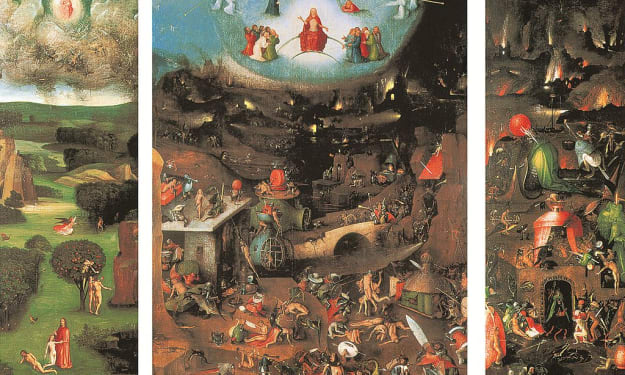
The Song of Seikilos” is one of the oldest surviving epitaphs of a complete musical composition, along with musical notation known to date. The lyrics and the musical notes of this song were found engraved on a tombstone around the ancient city of Tralleis in the Aydın-ancient Carian region of Turkey. This song is also honored as being the second oldest song dating back to 2 A.D.
The oldest song in the world
I am sure hearing that Seikilos is the second oldest song makes you wonder about the oldest one. The oldest piece of music, possessing both the words and the musical notes is the “Hurrian hymn to Nikkal”. The hymn was written on clay tablets of 3500 years, was unearthed in the 1950s in the remnants of the ancient city of Ugarit, in Northern Syria. The tablets from 1400 B.C. were written in the Hurrian language using Sumerian cuneiform script.
The reason why I am writing about the second oldest song is that it is unique in possessing complete lyrics and the musical notes beneath them, while only one of the 29 tablets of the Hurrian hymn was found at the site. Thus, one can only listen to a small part of the so-called hymn. [1] For those who are unfamiliar with the word hymn, it is a formal song, sung to God in public worship, typically by an entire congregation.
Why is the second oldest song important?
Seikilos's song is important since it is the oldest fully preserved musical composition. Therefore, this epitaph not only attracted the attention of archeologists and scientists but musicians as well. Besides, it is the only complete work of art that has been excavated from West Anatolia.
One can find 65 books and more than 1,500 articles written on Seikilos. The lyrics and the musical notes of the song, along with the ancient Greek musical notation, are engraved one under the other on one column. The so-called text is a short poem preceded by a distich and by three words in prose. [2]
Even though archeologists have found similar compositions on gravestones to date, none have been preserved that well. In the comprehensive academic article of Professor Aynur Civelek from Adnan Menderes University, Archeology Department, she stated that one of the most important works, regarding the musical analysis of the Seikilos epitaph, belonged to Crusius. According to him, it possesses a completely developed rhythmic notation. The epigram is arranged in six lines and the composition is formed in four lines of iambic diameter. It consists of many diachronic and syllables.
In the statement on the tombstone, it is written as:
“I’m a tombstone, an image.
Seikilos placed me here as an everlasting sign of deathless remembrance.”
The lyrics of the song engraved on the column read (original Greek version and the English translation):
Ὅσον ζῇς, φαίνου, Hoson zês, phainou,
As long you live, shine
μηδὲν ὅλως σὺ λυποῦ· mêden holôs su lupou;
Grieve you not at all
πρὸς ὀλίγον ἐστὶ τὸ ζῆν, pros oligon esti to zên,
Life is of brief duration
τὸ τέλος ὁ xρόνος ἀπαιτεῖ. to telos ho chronos apaitei.
Time demands its end (Translation: Thomas J. Mathiesen)

In the inscription, Seikilos introduced himself as Euterpe’s son. Euterpe is the muse of music and lyric poetry who gave the name to the historian Herodotos’s Book II. According to some mythological sources, Euterpe was the one to invent the flute. Euterpe was displayed as playing flute in Arkhelaos relief and in one of Heriodos paintings. [3]
Where and when was Seikilos tombstone unearthed?
Seikilos tombstone was unearthed in the ancient city of Tralleis during the 1882–1883 Aydın-İzmir railway construction. The column was found by the general manager and chief engineer of the Ottoman Aydın Railway Company, Edward Purser, and was added to his private collection. Its fractured bottom end was also included in the collection but his wife evaluated that part as a flowerpot and thus one line of the inscription is stated to be missing. [4]
The journey of the Seikilos tombstone
Sir William Mitchell Ramsay who was engaged in archeological research in Turkey published an article in 1883 called “Inscriptions inédites de l’Asie Mineure” (Unedited Inscriptions of Asia Minor) presenting the inscription he saw in Purser’s collection.
It was Alfred Laumonier who took the first photo of this epitaph. The work of art was passed to Young’s collection who was Purser’s lawyer living in Buca, İzmir. The column was preserved by the German Consul in İzmir, due to the occupation of the city in 1922, and then sent to Stockholm via İstanbul by William Daniels, the Consul’s lawyer.
Where is Seikilos Tombstone now?
In 1966, the National Museum in Copenhagen bought the artifact. It has been exhibited there ever since. Unfortunately, another historical piece, belonging to Aydın, is displayed in another part of the world far away from its homeland.

Attempts to bring the ancient stone back to its homeland
Endeavors have been underway since 2012 to bring this artifact back to Turkey, to the land where it was discovered. The Aydın Theater Association worked hard to bring it back and Adnan Menderes University (AMU) Faculty of Education Music Department sang the notes recorded in the Seikilos Tomb Inscription in Turkish to support the association.
The students of AMU Music Group performed the song to the public at the “Tralleis Seikilos” event held in Aydın Municipality in Şükran Güngör and AMU Mandreos Halls on May 21st, 2012. [5] However, no results were achieved.
In 2020, Efeler (one of Aydın’s districts) Mayor M. Fatih Atay declared the initiation of the legal process to bring the ancient artifact back to where it belongs. He stated that they would continue to make international initiatives as soon as they collected the necessary information and documentation.
Mayor Atay announced that:
“We will start the process to take the artifact that belongs to us and return the inscription to its homeland. We will take legal action. Before the official letter, we will prepare infrastructure works that prove that this artifact belongs to us was and taken from the Ancient City of Tralleis. We will start the official process by adding the report prepared by the Excavation Directorate. I believe that we will bring back the artifact belonging to our city, our country.” [6]
A Turkish author, Yaşar Yılmaz, wrote a very informative book called Anadolu’nun Gözyaşları (Tears of Anatolia), which creates awareness to protect our own cultural values. The book presents the most comprehensive inventory of our historical artifacts, most of which were taken from various regions of Anatolia between 1830 and 1922, and exhibited in museums in Europe and the United States.
In his book, the writer states that:
“I hope that this research, which we have been waiting patiently for the last hundred years as a country, will contribute to knowing our historical artifacts that have been taken abroad and to protect our cultural assets by knowing the value of our remaining works. I hope our future generations will overcome their shortcomings by improving this process.” [7]

The importance of cultural heritage
The past contains the values that make us who we are. Nations and societies that forget their past and cannot pass on their cultural heritage to future generations, may easily lose their culture and fall under the influence of other cultures.
The cultural heritage of a society means its history, the consciousness of being a nation, and its desire to live together. Therefore, embracing cultural heritage is one of the most important steps in moving a country forward. The Anatolian geography on which we live is one of the few areas where humanity first emerged, where the first civilizations began, and cultures developed. Anatolia is the manifestation of endless wealth in the historical sense.
The more we claim our own culture and values, the stronger we are in facing challenges in the world. With the support of our state, it is our only wish that the leaders, citizens, and non-governmental organizations join forces to protect our heritage and bring the Seikilos epitaph back to Aydın where it was composed and discovered.
References:
- Greece High Definition Blog
- Sławomir Sprawski, Aristotle on the history of Euboea? Remarks on the author of Peri Euboias (FGrH 423) Zsigmond Ritoók, Seikilos Poem, JOURNAL OF CLASSICAL STUDIES MATICA SRPSKA, (First publication by W. M. Ramsay, Unedited Inscriptions from Asia Mi- nor: BCH 7, 1883, 277; O. Crusius, Ein Liederfragment auf einer antiken Statuen- basis: Philologus 50, 1891, 163–172; O. Crusius, Zu neuentdeckten Musikresten: Philologus 52, 1894, 160–173 (with a reproduction of the inscription in drawing where also the last line — later cut off — can be seen. — The standard edition today: E. Pöhlmann — M. L. West, Documents of Ancient Greek Music. Oxford 2001. N° 23, p. 88–91 with a full bibliography.)
- Professor Aynur Civelek, Seikilos’un Şarkısı (Song of Seikilos), Studies in Honour of K. Levent Zoroğlu Edited by Mehmet Tekocak
- Aydın Post Newspaper, Akın Yakan, Bir Aşk Hikayesi ve Aydın (A Love Story and Aydın), Noveber 14, 2016
- Yeni Asır Newspaper, Kazım Yörükce, Kaçırılan ilk notalar müzikle geri istenecek (The first musical notes will be demanded), April 24, 2012
- Sözcü Newspaper, Latif Sansür, "Seikilos Ağıtı için harekete geçildi" (Attempts have been made to return Seikilos epitaph)
- Yaşar Yılmaz, Anadolu’nun Gözyaşları (The Tears of Anatolia), Yapı Endüstri Merkezi Publishing, 2015
Some of the Seikilos song versions you can listen to:
Disclaimer
The original version of this story was published in another platform under a different title.
About the Creator
Ece Uyguc
Economist, certified English<>Turkish translator, writer, NFT collector
https://gulsenuyguc.medium.com/
https://www.linkedin.com/in/ece-uguc/
https://www.quora.com/profile/Ece-Uyguc
https://www.reddit.com/user/Uyguc2021






Comments
There are no comments for this story
Be the first to respond and start the conversation.